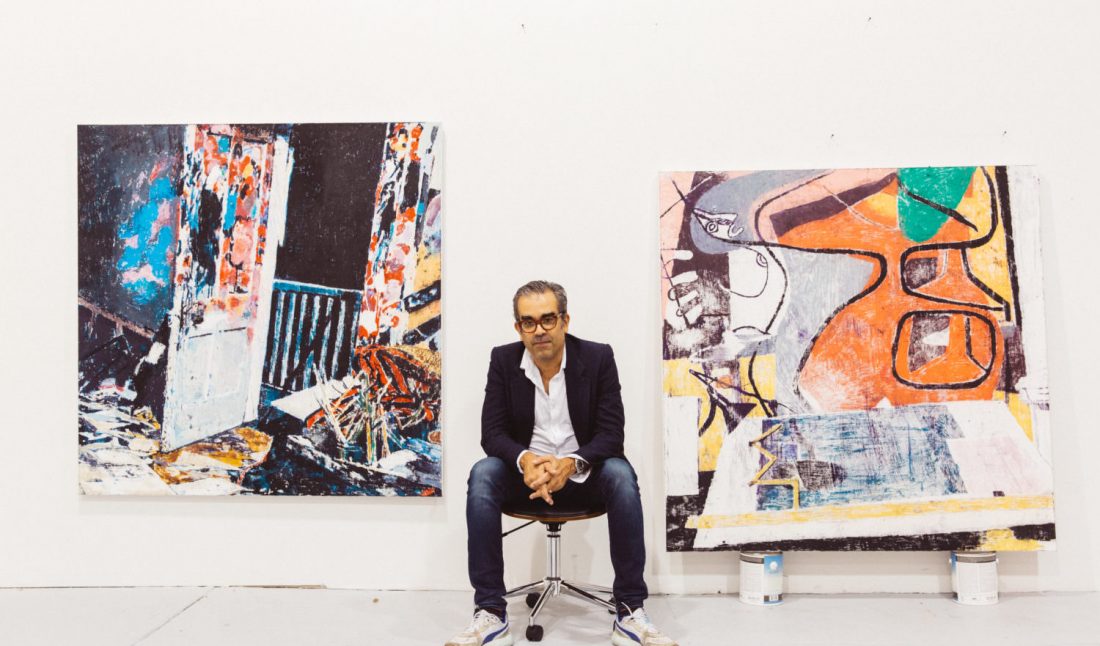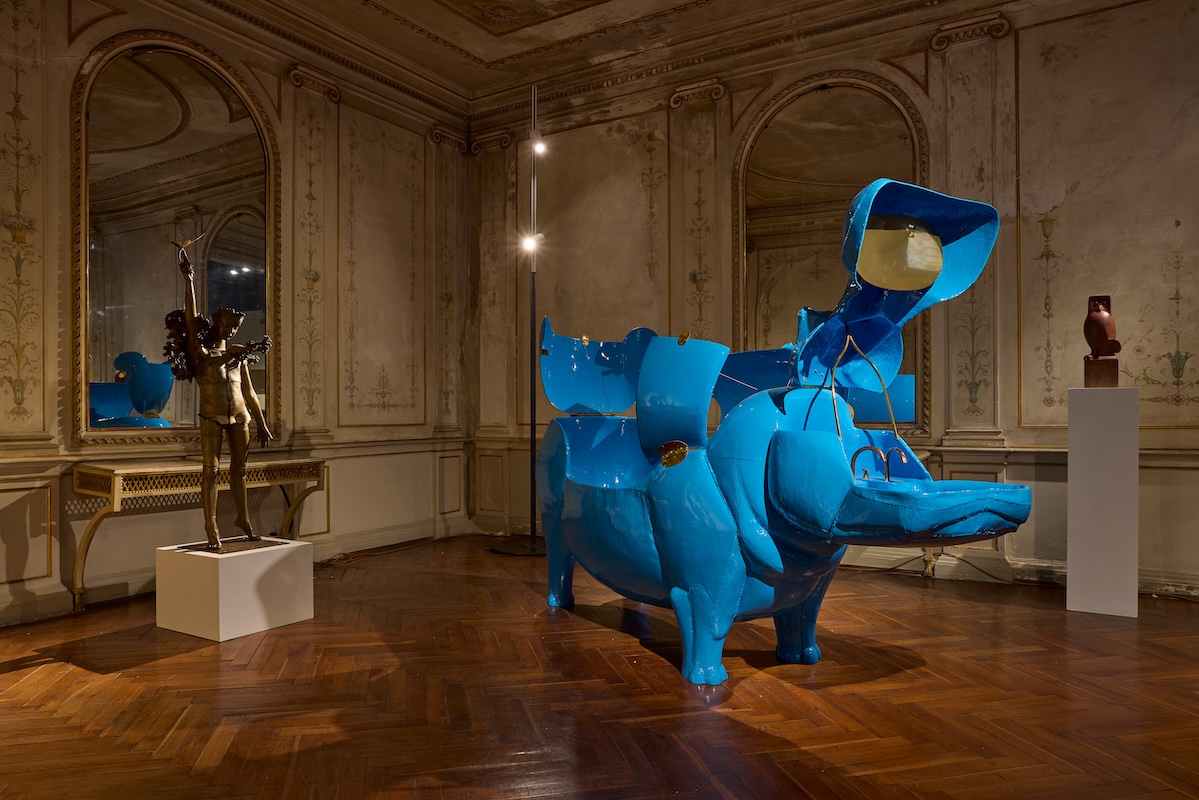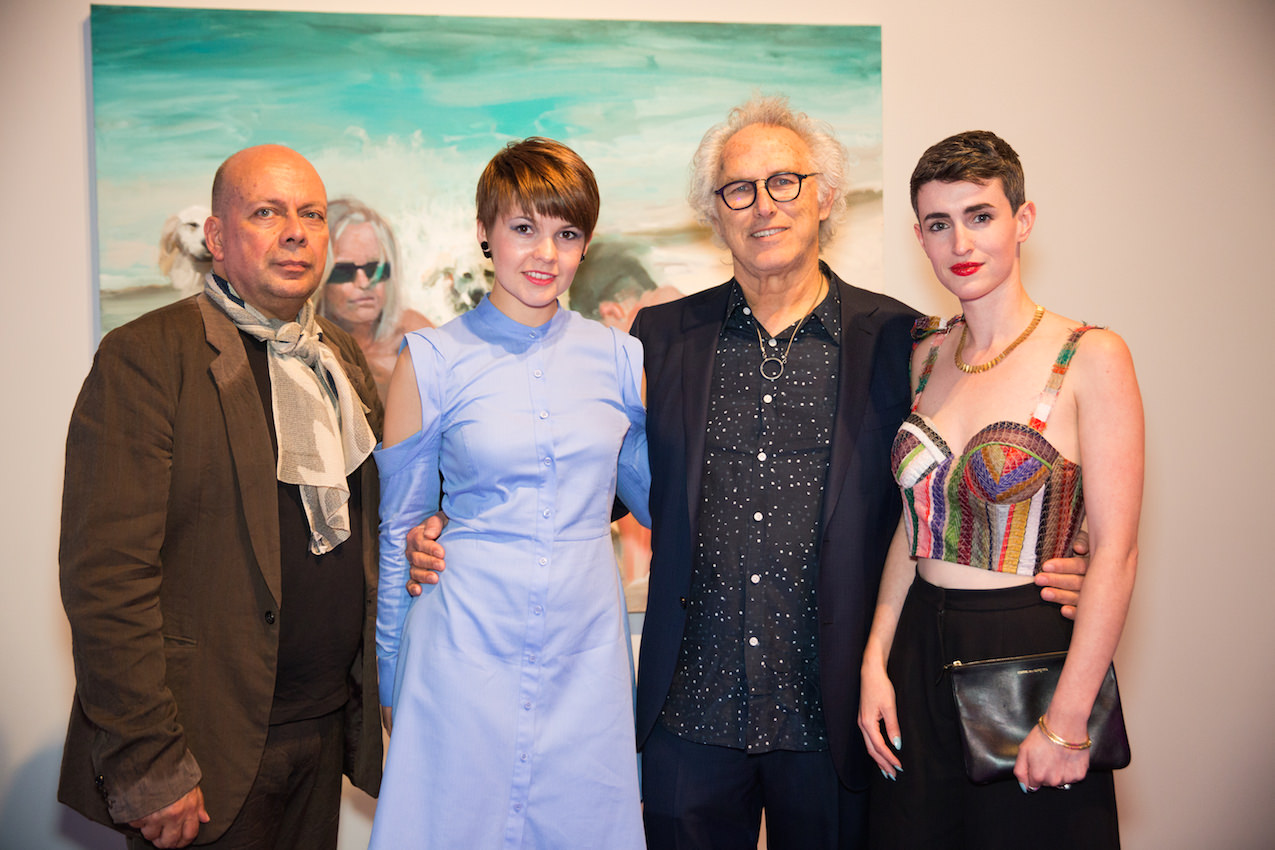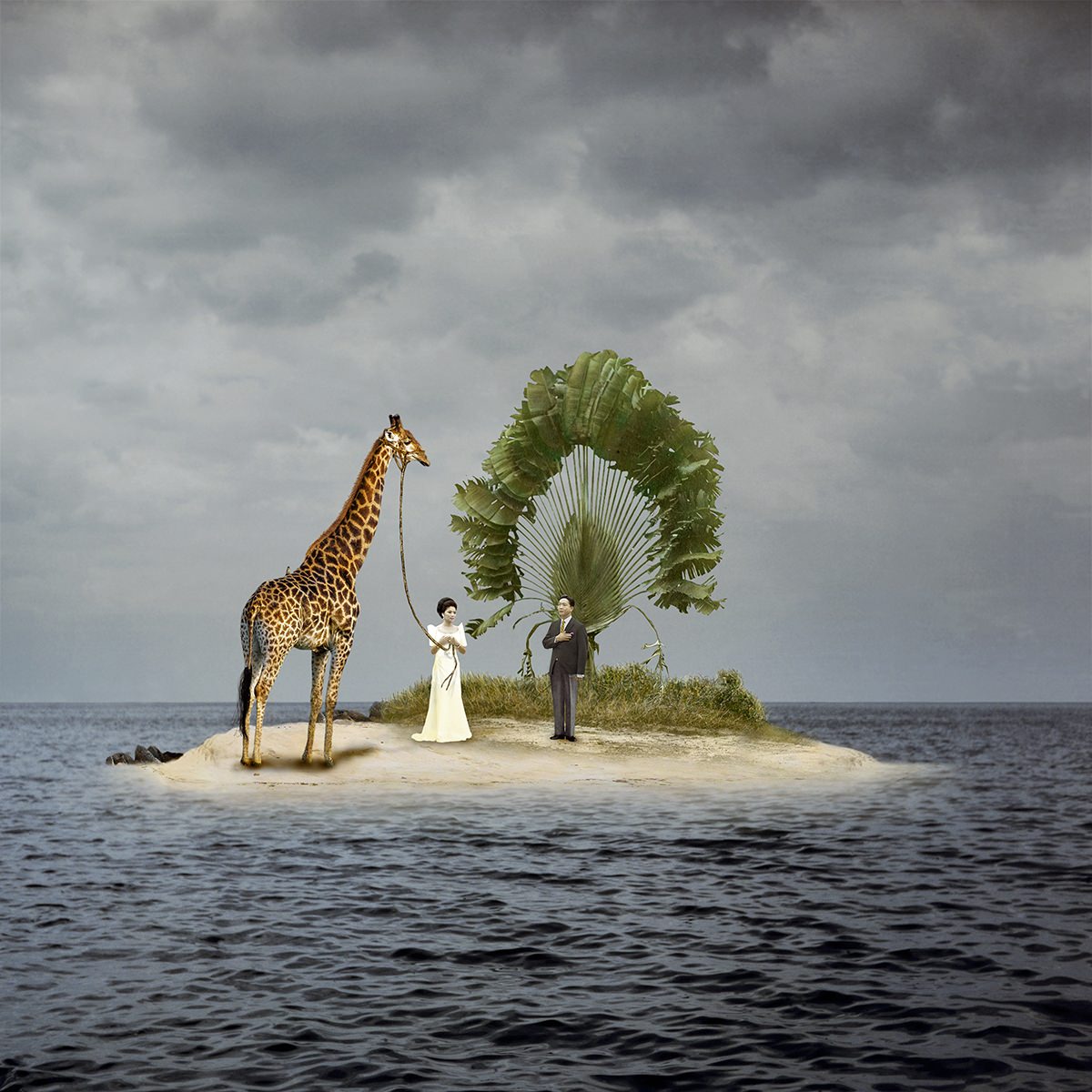Now on view at Ben Brown Fine Arts in London is “The Cinematic Self,” Enoc Perez‘s first exhibition in the UK in more than a decade. Open through November 22, the show features a selection of new and recent works from the artist’s series of interior paintings, which stray from Perez’s usual exterior works, depicting iconic utopian architecture—in particular American post-war landmarks and embassies around the world.
For the series, the artist chose to move indoors, taking a look at spaces belonging to renowned figures of the 20th century. Including settings like the Paris home of collector Jacques Doucet, Elvis Presley‘s Jungle Room, David Bowie‘s bedroom, and the studio of Francis Bacon, Perez has created an intimate dialogue on what ones personal effects can say about their individuality.
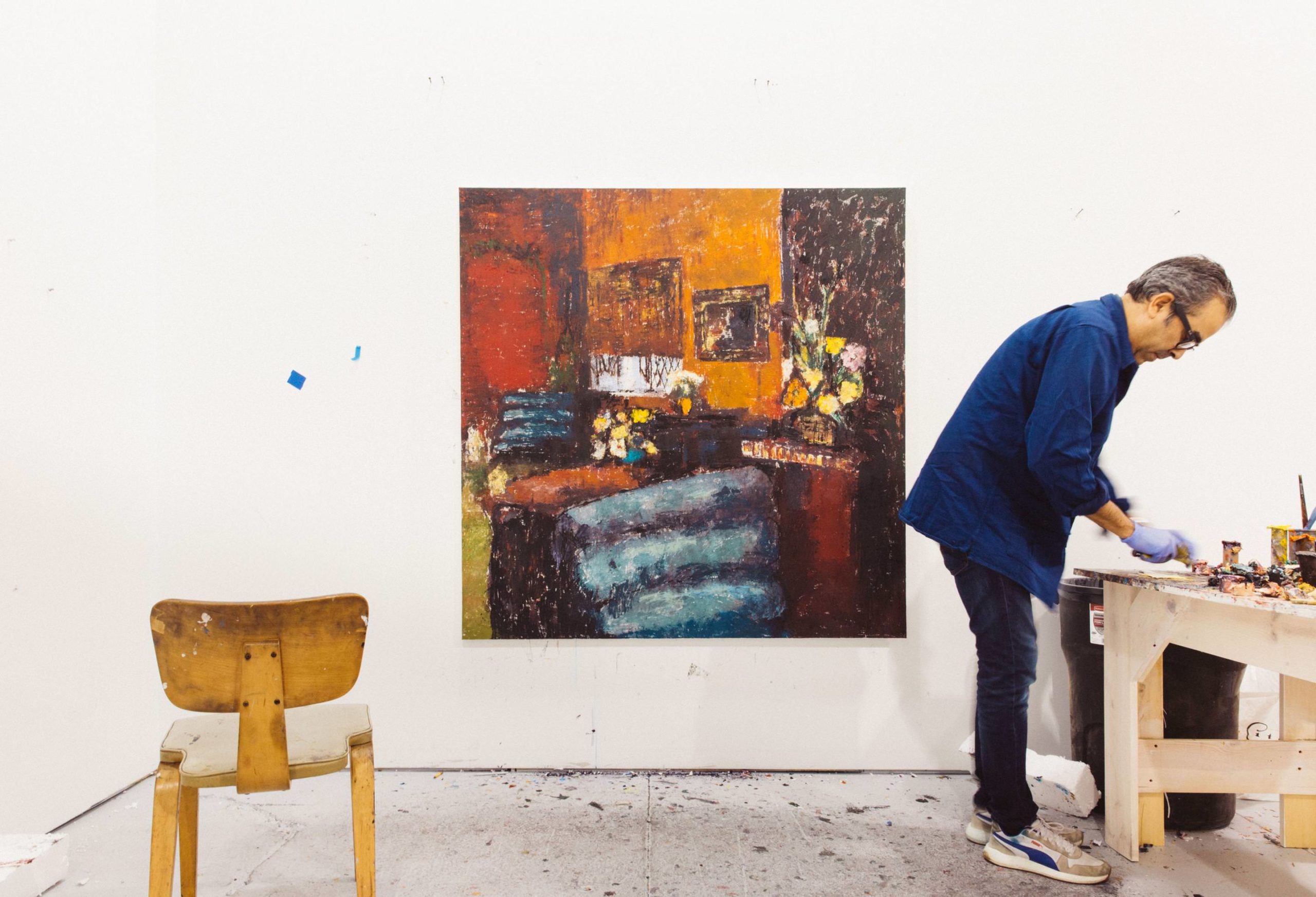 Enoc Perez
Enoc Perez “The Cinematic Self”
Courtesy of Ben Brown Fine Arts.
To learn more about the works on view and why he chose to change the focus of his subject matter, Whitewall spoke with Perez in an interview below.
WHITEWALL: What was the starting point for this new body of work? Why did you want to look at interior spaces, rather than exteriors?
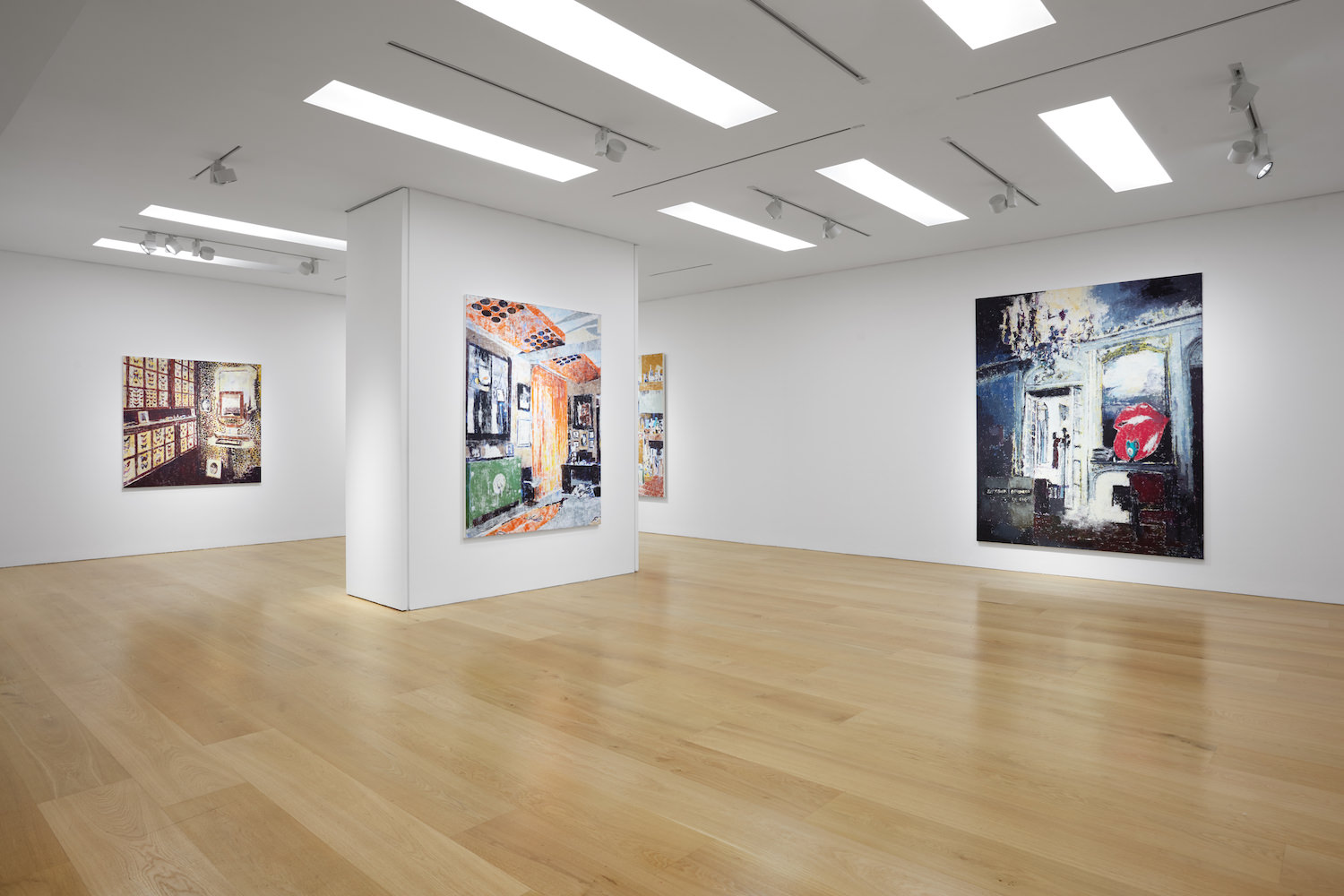 Installation view of “Enoc Perez, The Cinematic Self”
at Ben Brown Fine Arts
Installation view of “Enoc Perez, The Cinematic Self”
at Ben Brown Fine Arts Photo credit by Tom Carter
Courtesy of Ben Brown Fine Arts.
ENOC PEREZ: The starting point for this body of work was completing an exhibition about Phillip Johnson’s work and turning fifty. The exhibition hung at the Dallas Contemporary and it was smart, but as I looked at it in the Museum I understood that I had finished more than just the exhibition. Also mid-life crisis. Got a nice car, sold it. Wanted to get a tattoo, didn’t get it. Satisfaction for me is usually found in my studio, so I locked myself in for a year and found some. Looking inward was very important to find what I needed. Looking at my life as an artist. The interiors are almost literal.
WW: What do these spaces say about the people that occupy them?
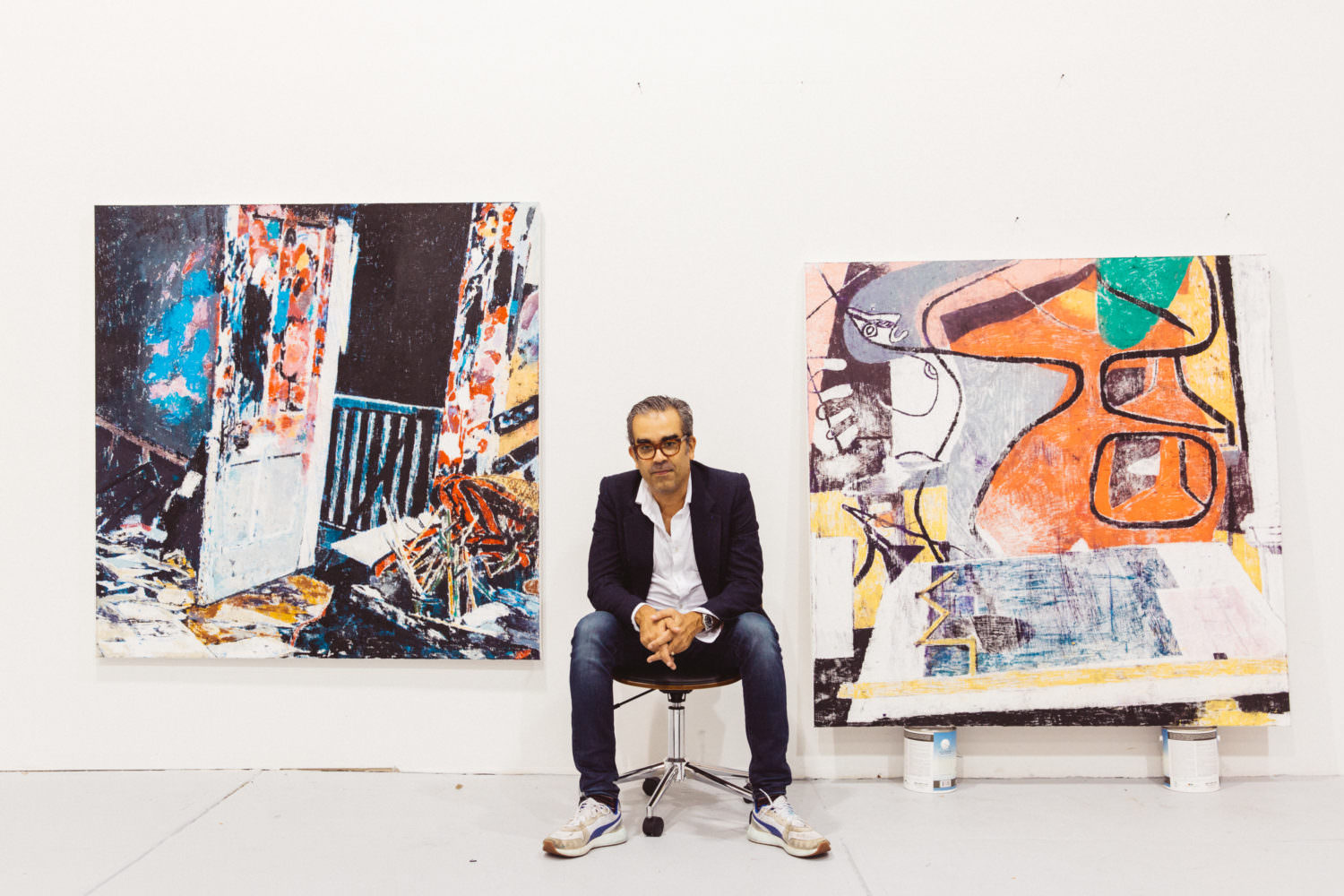 Enoc Perez
Enoc Perez “The Cinematic Self”
Courtesy of Ben Brown Fine Arts.
EP: I think that the spaces that people live in are both mental and physical constructs that can not be reduced to architecture. At their best, they are an extension of the body or of a vital organ. I see these spaces as expressions of who we are as people.
A few more thoughts: They are a manifestation of an idea of who we think we are. The physical embodiment of whom we want to be. The réification of Aesthetic thought. I believe that every space tells a story, be it deliberate or not. It is an expression of our humanity.
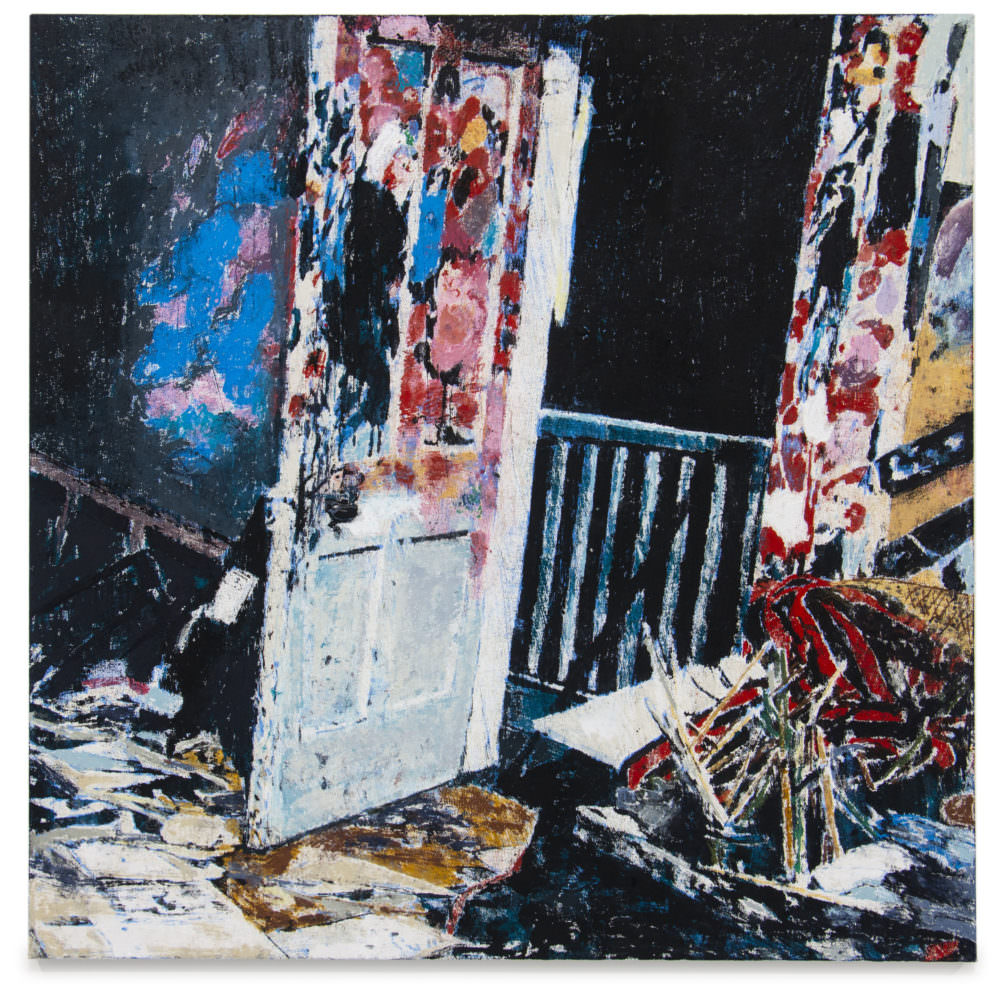 Enoc Perez
Enoc Perez 7 Reece Mews Kensington, London, Studio of Francis Bacon
2019
Oil on canvas
60 x 60 inches
Courtesy of Ben Brown Fine Arts.
WW: How did you choose these subjects?
EP: I choose subjects that I admire in one way or another. Choosing the subject is one of the most delightful aspects of making these paintings. You see, making these paintings is allowing me to make sort of an encyclopedia of cool. My own encyclopedia.
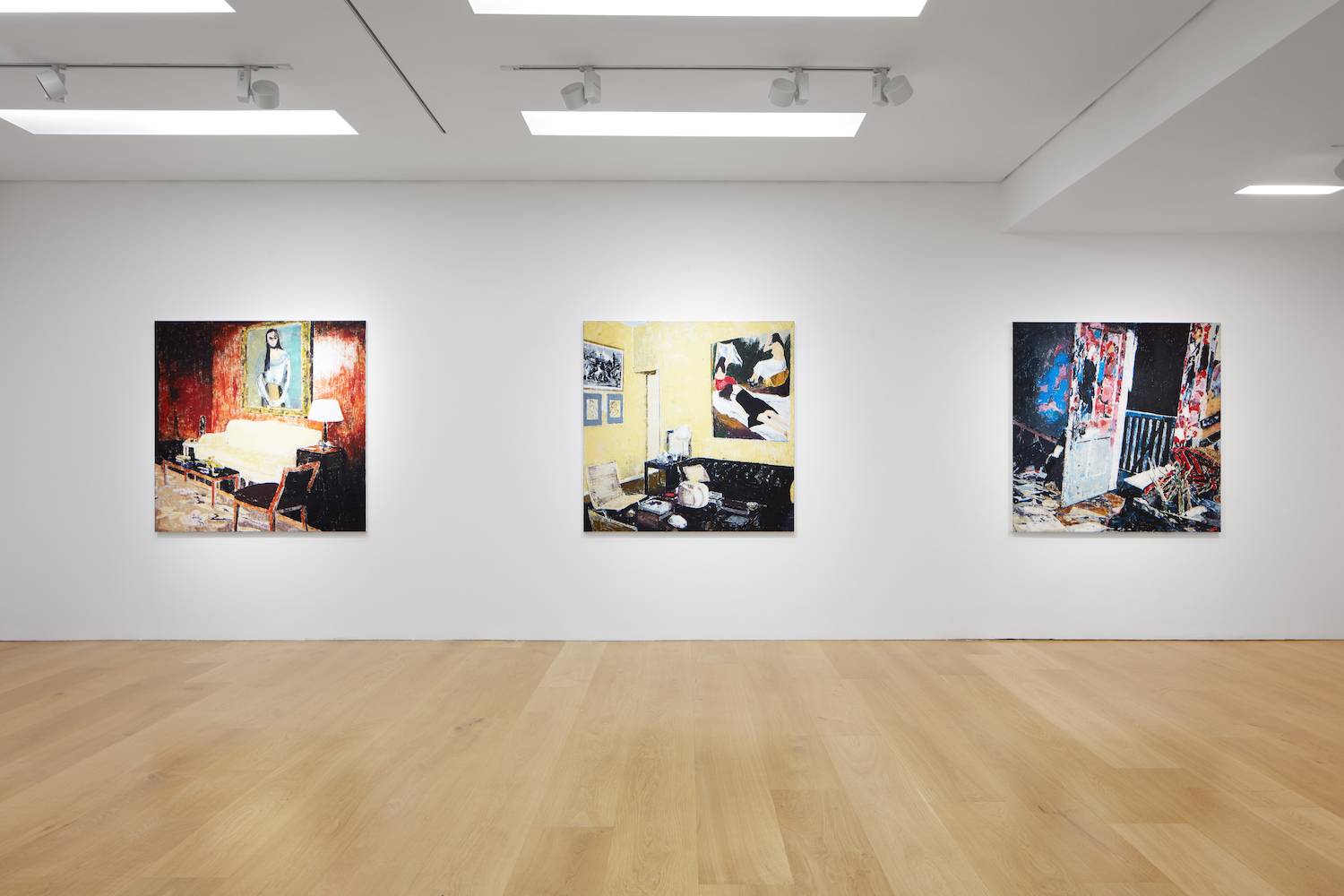 Installation view of “Enoc Perez, The Cinematic Self”
at Ben Brown Fine Arts
Installation view of “Enoc Perez, The Cinematic Self”
at Ben Brown Fine Arts Photo credit by Tom Carter
Courtesy of Ben Brown Fine Arts.
WW: Can you tell us about your work depicting Francis Bacon’s studio?
EP: The Bacon studio is one of the most legendary studios in art history. I have known the image since I was a student. For me the important thing was to choose the right image and make sure that it was painted convincingly. So I chose the door opening to the dark. If there is a painter that understood darkness it was Francis Bacon. To say things slightly crudely, he was a bad ass, both
as an artist and as a person. The studio looked like a beautiful disaster or a punk song. So painting it had to be addressed with precision and dissonance. I can only hope that I did it justice.
WW: You said that you painted these works with the same attitude and determination you had as a young painter. How did you tap into that youthful energy?
EP: That is without a doubt the hardest thing that I had to do. To look in the mirror and figure out exactly who I am as an artist, what was it that I signed up for, to put aside my own history and honestly look at what I paint towards: what is the best painting that I can make? How do you hit that bulls eye?
I focused on the paintings that I made in my late 20’s and through my 30’s. I wanted to prove that I could make a figurative painting using my unorthodox process of painting. The paintings had to be undeniable or else nobody would look at them. Back then, I had limited resources so the paint layers were thin and I was afraid to mess up because it took so long to make the paintings. It took me a while to tap into that state of mind. Because as many people do, I have evolved since my 20’s. But I understood that I needed to access that younger artist because of how essential those early paintings made are to me. Art never gets easier. The hardest thing is to look at yourself because it becomes a spiritual quest. Then hopefully you break on through.
WW: How did these works make you look at and consider your own space – your home or studio?
EP: When it comes to my own spaces they are what they are. Part intention, part reality, and lots of books. Always becoming.






